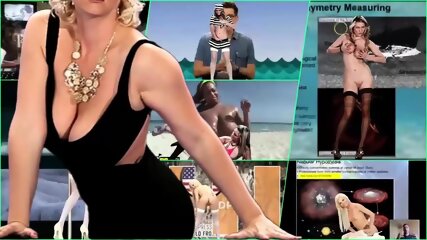Ver Su Coño 546min720p60fps
Sugerir Categoría
Vota por categorías existentes
Sugiere una nueva categoría para este video
Sugiere una descripción
Vote por las descripciones existentes
Sugiere una nueva descripción para este video
Description must have at least 50 characters. Current characters: 0
Advertisement
Oceanography (from Ancient Greek ὠκεανός (ōkeanós) 'ocean', and γραφή (graphḗ) 'writing'), also known as oceanology and ocean science, is the scientific study of the oceans. It is an Earth science, which covers a wide range of topics, including ecosystem dynamics; ocean currents, waves, and geophysical fluid dynamics; plate tectonics and the geology of the sea floor; and fluxes of various chemical substances and physical properties within the ocean and across its boundaries. These diverse topics reflect multiple disciplines that oceanographers utilize to glean further knowledge of the world ocean, including astronomy, biology, chemistry, climatology, geography, geology, hydrology, meteorology and physics. Paleoceanography studies the history of the oceans in the geologic past. An oceanographer is a person who studies many matters concerned with oceans, including marine geology, physics, chemistry and biology.
Contents
1 History
1.1 Early history
1.2 Modern oceanography
2 Branches
2.1 Biological oceanography
2.2 Chemical oceanography
2.2.1 Ocean acidification
2.3 Geological oceanography
2.4 Physical oceanography
2.4.1 Seismic Oceanography
2.4.2 Ocean currents
2.4.3 Ocean heat content
2.5 Paleoceanography
3 Oceanographic institutions
4 Related disciplines
5 See also
6 References
6.1 Sources and further reading
7 External links
History
Map of the Gulf Stream by Benjamin Franklin, 1769–1770. Courtesy of the NOAA Photo Library.
Early history
Humans first acquired knowledge of the waves and currents of the seas and oceans in pre-historic times. Observations on tides were recorded by Aristotle and Strabo in 384-322 BC.[1] Early exploration of the oceans was primarily for cartography and mainly limited to its surfaces and of the animals that fishermen brought up in nets, though depth soundings by lead line were taken.
The Portuguese campaign of Atlantic navigation is the earliest example of a systematic scientific large project, sustained over many decades, studying the currents and winds of the Atlantic.
The work of Pedro Nunes (1502-1578) is remembered in the navigation context for the determination of the loxodromic curve: the shortest course between two points on the surface of a sphere represented onto a two-dimensional map.[2][3] When he published his "Treatise of the Sphere" (1537), mostly a commentated translation of earlier work by others, he included a treatise on geometrical and astronomic methods of navigation. There he states clearly that Portuguese navigations were not an adventurous endeavour:
"nam se fezeram indo a acertar: mas partiam os nossos mareantes muy ensinados e prouidos de estromentos e regras de astrologia e geometria que sam as cousas que os cosmographos ham dadar apercebidas (...) e leuaua cartas muy particularmente rumadas e na ja as de que os antigos vsauam" (were not done by chance: but our seafarers departed well taught and provided with instruments and rules of astrology (astronomy) and geometry which were matters the cosmographers would provide (...) and they took charts with exact routes and no longer those used by the ancient).[4]
His credibility rests on being personally involved in the instruction of pilots and senior seafarers from 1527 onwards by Royal appointment, along with his recognized competence as mathematician and astronomer.[2] The main problem in navigating back from the south of the Canary Islands (or south of Boujdour) by sail alone, is due to the change in the regime of winds and currents: the North Atlantic gyre and the Equatorial counter current [5] will push south along the northwest bulge of Africa, while the uncertain winds where the Northeast trades meet the Southeast trades (the doldrums) [6] leave a sailing ship to the mercy of the currents. Together, prevalent current and wind make northwards progress very difficult or impossible. It was to overcome this problem and clear the passage to India around Africa as a viable maritime trade route, that a systematic plan of exploration was devised by the Portuguese. The return route from regions south of the Canaries became the 'volta do largo' or 'volta do mar'. The 'rediscovery' of the Azores islands in 1427 is merely a reflection of the heightened strategic importance of the islands, now sitting on the return route from the western coast of Africa (sequentially called 'volta de Guiné' and 'volta da Mina'); and the references to the Sargasso Sea (also called at the time 'Mar da Baga'), to the west of the Azores, in 1436, reveals the western extent of the return route.[7] This is necessary, under sail, to make use of the southeasterly and northeasterly winds away from the western coast of Africa, up to the northern latitudes where the westerly winds will bring the seafarers towards the western coasts by
tozmisalad
Comentarios
Escribe lo que quieras en este video porno, para que otros puedan verlo también. Pregunta sobre la estrella porno que protagoniza esta película o comparte tus conocimientos con los demás.
¿Sabes?
Twenty percent of American man admit they access pornography at work. Well, we all needs moment of relaxation. Especially in the USA.
Comentarios principales de esta semana
Say Hi if you wanna fuck my ass without a condom
Por: Lily29x | En: Japanese wife impregnated by her father-in-law- HQWhich do you prefer my tits or my cute face?
Por: DianaX184 | En: Brittany Andrews Blonde Milf Cumshot Dp Cum Tits Facial Two Bbc Dgs

















![[a] Siguiendo A Esta Jovencita Flaca Hasta Su Casa](https://static-ca-cdn.eporner.com/thumbs/static4/9/95/959/9596757/15_240.jpg)


















